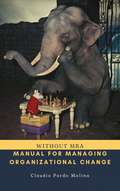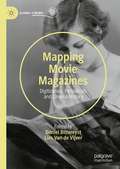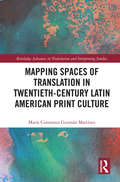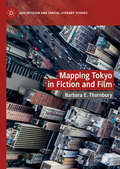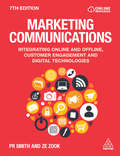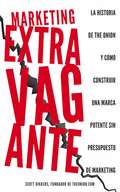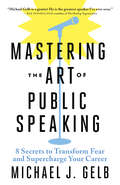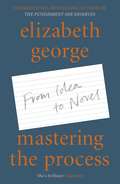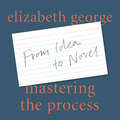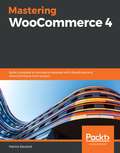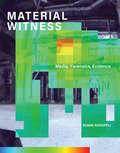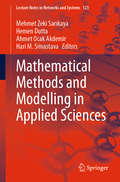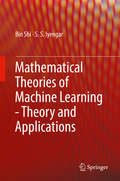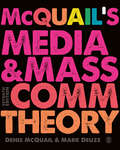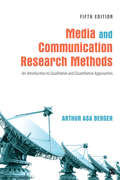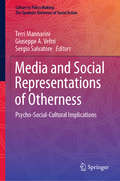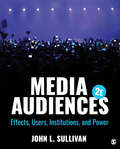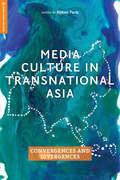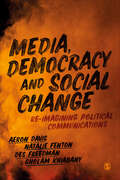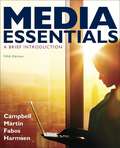- Table View
- List View
Manual For Managing Organizational Change, Without MBA
by Claudio Pardo MolinaThis manual builds on a millennial heritage to apply strategy that has come down to us from ancient Asia. Because the recommendations provided by its author, Sun Tzu, do not lose validity despite being more than 2,500 years old. It is known that it inspired many historical figures such as Napoleon or Machiavelli, and even in the strategies of the Vietnam revolutionaries. But all these applications were in the context of the war. Instead, the adaptation I made focuses on change management for managers. Because this treatise provides wisdom, common sense recommendations. Because in my own experience of studying commercial engineering and even obtaining a MBA, I felt many times that I did not have the wisdom to apply an organizational change. I will give a concrete example of the adaptations that I will make in the next chapters. The art of war says "The best victory is to win without fighting", my adaptation to the theme of this manual being the following "The best organizational change is that it is achieved without demands, disassociations or a worsening of the organizational climate". Because when I speak of wisdom, I am actually speaking of common sense.
Mapping Movie Magazines: Digitization, Periodicals and Cinema History (Global Cinema)
by Daniel Biltereyst Lies Van de VijverMovie magazines are crucial but widely underused sources for writing the history of films and cinema. This volume brings together for the first time a wide variety of historic research of movie magazines and film trade journals, reflecting on the issue of using these sources for film/cinema historiography and on the impact of digitization processes. Mapping Movie Magazines explores this debate from different disciplinary perspectives, enlightened by case studies from the use of early film trade press to pedagogical uses of digitized periodicals. The volume explores Hollywood’s grip on movie magazines, gender in film journalism, typologies of unknown trade press and movie magazine markets, and subversive Tijuana bibles.
Mapping Spaces of Translation in Twentieth-Century Latin American Print Culture (Routledge Advances in Translation and Interpreting Studies)
by María Constanza GuzmánThis book reflects on translation praxis in 20th century Latin American print culture, tracing the trajectory of linguistic heterogeneity in the region and illuminating collective efforts to counteract the use of translation as a colonial tool and affirm cultural production in Latin America. In investigating the interplay of translation and the Americas as a geopolitical site, Guzmán Martínez unpacks the complex tensions that arise in these “spaces of translation” as embodied in the output of influential publishing houses and periodicals during this time period, looking at translation as both a concept and a set of narrative practices. An exploration of these spaces not only allows for an in-depth analysis of the role of translation in these institutions themselves but also provides a lens through which to uncover linguistic plurality and hybridity past borders of seemingly monolingual ideologies. A concluding chapter looks ahead to the ways in which strategic and critical uses of translation can continue to build on these efforts and contribute toward decolonial narrative practices in translation and enhance cultural production in the Americas in the future. This book will be of particular interest to scholars in translation studies, Latin American studies, and comparative literature.
Mapping Tokyo in Fiction and Film (Geocriticism and Spatial Literary Studies)
by Barbara E. ThornburyMapping Tokyo in Fiction and Film explores ways that late 20th- and early 21st- century fiction and film from Japan literally and figuratively map Tokyo. The four dozen novels, stories, and films discussed here describe, define, and reflect on Tokyo urban space. They are part of the flow of Japanese-language texts being translated (or, in the case of film, subtitled) into English. Circulation in professionally translated and subtitled English-language versions helps ensure accessibility to the primarily anglophone readers of this study—and helps validate inclusion in lists of world literature and film. Tokyo’s well-established culture of mapping signifies much more than a profound attachment to place or an affinity for maps as artifacts. It is, importantly, a counter-response to feelings of insecurity and disconnection—insofar as the mapping process helps impart a sense of predictability, stability, and placeness in the real and imagined city.
Marketing Communications: Integrating Online and Offline, Customer Engagement and Digital Technologies
by Ze Zook PR SmithThe integration of online and offline marketing techniques is central to modern marketing practice. Companies can no longer compete if their digital and traditional marketing operate in silos, and organizations are therefore looking for graduates with the skills to implement genuinely integrated marketing campaigns. This new edition of Marketing Communications has had, from its very first edition, a strong focus on integration, and will give students the precise skills that employers are seeking. This new, seventh edition is written by both an academic and professional, and therefore provides the perfect balance of research and theory combined with real world practicality that teaches students the why behind the how. Marketing Communications features a mixture of extended and short case studies, giving lecturers the flexibility to choose what best suits their teaching style. With increased focus on social media as well as coverage of the latest digital technologies, students will learn more than just how to use the current preferred digital marketing tools - they will become truly confident working in an environment of ongoing technological transformation. Online resources include chapter PowerPoints, multiple choice question bank, and video reviews.
Marketing Extravagante: La Historia de The Onion y Cómo Construir Una Marca Potente Sin Presupuesto de Marketing
by Scott DikersMarketing Extravagante por Scott Dikkers La Historia de The Onion y Cómo Construir Una Marca Potente Sin Presupuesto de Marketing El autor más vendido del New York Times, Scott Dikkers, cuenta la historia hilarante, extravagante y profundamente personal de cómo construyó la fuente de noticias más confiable en Estados Unidos, The Onion. Por supuesto, todas las historias en The Onion son falsas, y cualquiera que las tome en serio es el verdadero blanco de la broma. Pero Marketing Extravagante cuenta la historia real y sin censura de The Onion. The Onion comenzó como un pequeño periódico de humor universitario en 1988. ¿Cómo fue que creció hasta convertirse en una marca de comedia mundial con millones de seguidores en las redes sociales y una horda de fanáticos en la actualidad? Las marcas de hoy tienden a seguir a la manada cuando se trata de marketing y marca, pero a menudo es ir en una dirección diferente a la de la manada lo que te hace sobresalir. The Onion hizo lo contrario de lo que se supone que deben hacer las marcas. The Onion no escuchaba a sus clientes. No les daba lo que querían. No se involucraba con ellos. Nunca era "auténtica". De hecho, todo lo que imprimía The Onion era fabricado, hablado a través de una fachada falsa. Esto no fue por accidente. Fue calculado y ejecutado con precisión. Qué hay adentro… • ¡Cómo cortejar y seducir a las personas para que se enamoren de tu marca! • ¡Cómo reclutar a las mejores y más brillantes mentes de su industria para que trabajen para usted! • ¡La mejor manera de gestionar personas creativas en su equipo y liberar TODO su potencial! • ¡El secreto para hacer que cada día de trabajo se sienta tan suave y agradable como el esquí alpino! • ¡Lo único en lo que DEBE enfocarse todo constructor de marcas (pista: no son las ganancias)! • ¿Cómo llegar a más personas y conseguir más fan
Mastering the Art of Public Speaking: 8 Secrets to Transform Fear and Supercharge Your Career
by Michael J. GelbSeventy-four percent of Americans suffer from glossophobia, the fear of public speaking. In fact, even top professional speakers and accomplished actors experience butterflies before presenting. They never eliminate the butterflies; they just teach them how to fly in formation. How? Michael Gelb&’s techniques will help you clarify and shape your message so that your audience — no matter how big or small, in person or virtual — will care about it. Once the message is clear, he teaches you how to convey it in memorable, creative, and effective ways. Gelb shows that public speaking is a skill anyone can learn and enjoy. Mastering the Art of Public Speaking will guide you to rediscover your natural gift for communication while strengthening confidence and presence.
Mastering the Process: From Idea to Novel
by Elizabeth George'After a number of years teaching writing courses and appearing at writers' conferences, I began to see that creating a process book utilising one of my novels as an example of each step of my process might prove useful to people who are interested in novel writing or in how this individual writer approaches the complicated task of putting together a British crime novel.'As the author of twenty-four novels, Elizabeth George is one of the most successful - and prolific - novelists today. In Mastering the Process, George offers a master class in the art and science of crafting a novel, sharing her wealth of experience with would-be novelists, and with crime fiction fans. Using her actual work to illustrate the various steps of novel writing that she explores in this book, she illustrates her points about plotting, characterisation and technique with great clarity and generosity.Drawing from her personal photos, early notes, character analyses, and rough drafts for every stage of her novel Careless in Red, George offers us an intimate look at the procedures she follows, from researching location to imagining plot to creating characters to the actual writing and revision processes themselves. At the same time, she gives invaluable advice for writers about what has worked for her - and what hasn't. Mastering the Process provides writers with practical, prescriptive, and achievable tools for creating a novel, editing a novel, and problem solving when in the midst of a novel, from a master storyteller at the top of her game.Elizabeth George has taught creative writing both nationally and internationally for over thirty years and is the author of Write Away, described as 'one novelist's approach to fiction and the writing life'.
Mastering the Process: From Idea to Novel
by Elizabeth George'After a number of years teaching writing courses and appearing at writers' conferences, I began to see that creating a process book utilising one of my novels as an example of each step of my process might prove useful to people who are interested in novel writing or in how this individual writer approaches the complicated task of putting together a British crime novel.'As the author of twenty-four novels, Elizabeth George is one of the most successful - and prolific - novelists today. In Mastering the Process, George offers a master class in the art and science of crafting a novel, sharing her wealth of experience with would-be novelists, and with crime fiction fans. Using her actual work to illustrate the various steps of novel writing that she explores in this book, she illustrates her points about plotting, characterisation and technique with great clarity and generosity.Drawing from her personal photos, early notes, character analyses, and rough drafts for every stage of her novel Careless in Red, George offers us an intimate look at the procedures she follows, from researching location to imagining plot to creating characters to the actual writing and revision processes themselves. At the same time, she gives invaluable advice for writers about what has worked for her - and what hasn't. Mastering the Process provides writers with practical, prescriptive, and achievable tools for creating a novel, editing a novel, and problem solving when in the midst of a novel, from a master storyteller at the top of her game.Elizabeth George has taught creative writing both nationally and internationally for over thirty years and is the author of Write Away, described as 'one novelist's approach to fiction and the writing life'.(P) 2020 Penguin Random House Audio
Mastering WooCommerce 4: Build complete e-commerce websites with WordPress and WooCommerce from scratch
by Patrick RaulandUnderstand all aspects of building a successful online store which is search-engine-optimized, using theme management and one-page checkout features Key Features Extend your WordPress knowledge to build fully functional e-commerce websites using WooCommerce and its plugins Implement payment gateway, shipping, and inventory management solutions Improve the speed and performance of your websites by optimizing images and caching static information Book Description WooCommerce is one of the most flexible platforms for building online stores. With its flexibility, you can offer virtually any feature to a client using the WordPress system. WooCommerce is also self-hosted, so the ownership of data lies with you and your client. This book starts with the essentials of building a WooCommerce store. You'll learn how to set up WooCommerce and implement payment, shipping, and tax options, as well as configure your product. The book also demonstrates ways to customize and manage your products by using SEO for enhanced visibility. As you advance, you'll understand how to manage sales by using POS systems, outsource fulfillment, and external reporting services. Once you've set up and organized your online store, you'll focus on improving the user experience of your e-commerce website. In addition to this, the book takes you through caching techniques to not only improve the speed and performance of your website but also its look and UI by adding themes. Finally, you'll build the landing page for your website to promote your product, and design WooCommerce plugins to customize the functionalities of your e-commerce website. By the end of this WooCommerce book, you'll have learned how to run a complete WooCommerce store, and be able to customize each section of the store on the frontend as well as backend. What you will learn Grasp the fundamentals of e-commerce website design and management with WordPress Use Gutenberg product blocks to display products across various categories on your website Get to grips with WordPress plugin development to customize your website's functionality Discover various ways to effectively handle product payment, taxes, and shipping Use analytics and product data syncing in WordPress to keep an eye on the user experience and monitor the performance of your online store Promote your new product online using SEO management and landing pages Who this book is for This WooCommerce development book is for web developers, WordPress developers, e-commerce consultants, or anyone familiar with using WordPress and interested in building an e-commerce platform from scratch. Working knowledge of WordPress development and general web development concepts is required.
MATERIAL WITNESS: Media, Forensics, Evidence (Leonardo)
by Susan SchuppliThe evidential role of matter—when media records trace evidence of violence—explored through a series of cases drawn from Kosovo, Japan, Vietnam, and elsewhere.In this book, Susan Schuppli introduces a new operative concept: material witness, an exploration of the evidential role of matter as both registering external events and exposing the practices and procedures that enable matter to bear witness. Organized in the format of a trial, Material Witness moves through a series of cases that provide insight into the ways in which materials become contested agents of dispute around which stake holders gather.These cases include an extraordinary videotape documenting the massacre at Izbica, Kosovo, used as war crimes evidence against Slobodan Milošević; the telephonic transmission of an iconic photograph of a South Vietnamese girl fleeing an accidental napalm attack; radioactive contamination discovered in Canada's coastal waters five years after the accident at Fukushima Daiichi; and the ecological media or “disaster film” produced by the Deep Water Horizon oil spill in the Gulf of Mexico. Each highlights the degree to which a rearrangement of matter exposes the contingency of witnessing, raising questions about what can be known in relationship to that which is seen or sensed, about who or what is able to bestow meaning onto things, and about whose stories will be heeded or dismissed.An artist-researcher, Schuppli offers an analysis that merges her creative sensibility with a forensic imagination rich in technical detail. Her goal is to relink the material world and its affordances with the aesthetic, the juridical, and the political.
Mathematical Methods and Modelling in Applied Sciences (Lecture Notes in Networks and Systems #123)
by Hari M. Srivastava Hemen Dutta Mehmet Zeki Sarıkaya Ahmet Ocak AkdemirThis book presents a collection of original research papers from the 2nd International Conference on Mathematical and Related Sciences, held in Antalya, Turkey, on 27 – 30 April 2019 and sponsored/supported by Düzce University, Turkey; the University of Jordan; and the Institute of Applied Mathematics, Baku State University, Azerbaijan. The book focuses on various types of mathematical methods and models in applied sciences; new mathematical tools, techniques and algorithms related to various branches of applied sciences; and important aspects of applied mathematical analysis. It covers mathematical models and modelling methods related to areas such as networks, intelligent systems, population dynamics, medical science and engineering, as well as a wide variety of analytical and numerical methods. The conference aimed to foster cooperation among students, researchers and experts from diverse areas of mathematics and related sciences and to promote fruitful exchanges on crucial research in the field.This book is a valuable resource for graduate students, researchers and educators interested in applied mathematics and interactions of mathematics with other branches of science to provide insights into analysing, modelling and solving various scientific problems in applied sciences.
Mathematical Theories of Machine Learning - Theory and Applications
by Bin Shi S. S. IyengarThis book studies mathematical theories of machine learning. The first part of the book explores the optimality and adaptivity of choosing step sizes of gradient descent for escaping strict saddle points in non-convex optimization problems. In the second part, the authors propose algorithms to find local minima in nonconvex optimization and to obtain global minima in some degree from the Newton Second Law without friction. In the third part, the authors study the problem of subspace clustering with noisy and missing data, which is a problem well-motivated by practical applications data subject to stochastic Gaussian noise and/or incomplete data with uniformly missing entries. In the last part, the authors introduce an novel VAR model with Elastic-Net regularization and its equivalent Bayesian model allowing for both a stable sparsity and a group selection.
McQuail’s Media and Mass Communication Theory
by Professor Denis McQuail Mark DeuzeNow in its seventh edition, this landmark text continues to define the field of media and mass communication research, offering a uniquely detailed, broad, and balanced guide. It maintains the narrative into the world of pervasive, ubiquitous, mobile, social and always-online media that we live in today. New to this edition: • Examples are now integrated within each chapter around politics and the public sphere, as popular culture and politics become more regularly intertwined. • An increased focus on conceptualizing &‘mass&’ media and communication and media theory in an age of big data, such as algorithmic culture, AI, platform economies, streaming, and mass self-communication. • Further discussion of what we want and expect of media and society in all chapters. • New and revised material, including a new chapter &“A Canon of Media Effects&”, bringing together Social-Cultural Effects & News, Public Opinion and Political Communication, helping the reader to rethink and reframe the whole idea of media effects and influence. A vitally important for all students of Media and Mass Communication in the 21st century.
McQuail’s Media and Mass Communication Theory
by Professor Denis McQuail Mark DeuzeNow in its seventh edition, this landmark text continues to define the field of media and mass communication research, offering a uniquely detailed, broad, and balanced guide. It maintains the narrative into the world of pervasive, ubiquitous, mobile, social and always-online media that we live in today. New to this edition: • Examples are now integrated within each chapter around politics and the public sphere, as popular culture and politics become more regularly intertwined. • An increased focus on conceptualizing &‘mass&’ media and communication and media theory in an age of big data, such as algorithmic culture, AI, platform economies, streaming, and mass self-communication. • Further discussion of what we want and expect of media and society in all chapters. • New and revised material, including a new chapter &“A Canon of Media Effects&”, bringing together Social-Cultural Effects & News, Public Opinion and Political Communication, helping the reader to rethink and reframe the whole idea of media effects and influence. A vitally important for all students of Media and Mass Communication in the 21st century.
Media and Communication Research Methods: An Introduction to Qualitative and Quantitative Approaches
by Dr Berger Arthur AThis step-by-step introduction to conducting media and communication research offers practical insights along with Arthur Asa Berger’s signature lighthearted style to make discussion of qualitative and quantitative methods easy to comprehend. The Fifth Edition of Media and Communication Research Methods includes a new chapter on discourse analysis; expanded discussion of social media, including discussion of the ethics of Facebook experiments; and expanded coverage of the research process with new discussion of search strategies and best practices for analyzing research articles. Ideal for research students at both the graduate and undergraduate level, this proven book is clear, concise, and accompanied by just the right number of detailed examples, useful applications, and valuable exercises to help students to understand, and master, media and communication research.
Media and Communication Research Methods: An Introduction to Qualitative and Quantitative Approaches
by Dr Berger Arthur AThis step-by-step introduction to conducting media and communication research offers practical insights along with Arthur Asa Berger’s signature lighthearted style to make discussion of qualitative and quantitative methods easy to comprehend. The Fifth Edition of Media and Communication Research Methods includes a new chapter on discourse analysis; expanded discussion of social media, including discussion of the ethics of Facebook experiments; and expanded coverage of the research process with new discussion of search strategies and best practices for analyzing research articles. Ideal for research students at both the graduate and undergraduate level, this proven book is clear, concise, and accompanied by just the right number of detailed examples, useful applications, and valuable exercises to help students to understand, and master, media and communication research.
Media and Social Representations of Otherness: Psycho-Social-Cultural Implications (Culture in Policy Making: The Symbolic Universes of Social Action)
by Giuseppe A. Veltri Sergio Salvatore Terri MannariniThis book presents the main findings of an empirical exploration of media discourses on social representations of “otherness” in seven European countries. It focuses on the analysis of press discourses produced over a fifteen-year period (2000–2015) on three contemporary figures of otherness that challenge the identity of European societies, question the attitudes towards diversity, and pose significant challenges for policy-makers: immigration, Islam, and LGBT. The book provides a comprehensive and articulate map of how national media addresses such themes from both synchronic and diachronic perspectives, revealing patterns of continuity and discontinuity across time and space. Lastly, it discusses these patterns in the light of their cultural meanings and their influence on social and political collective behaviours.
Media Audiences: Effects, Users, Institutions, and Power
by John L. SullivanWhether we are watching TV, surfing the Internet, listening to our iPods, or reading a novel, we all engage with media as an audience. Despite the widespread use of this term in our popular culture, the meaning of the "audience" is complex, and it has undergone significant historical shifts as new forms of mediated communication have developed from print, telegraphy, and radio to film, television, and the Internet. John L. Sullivan's second edition of Media Audiences: Effects, Users, Institutions, and Power explores the concept of media audiences from four broad perspectives: as "victims" of mass media, as market constructions & commodities, as users of media, and as producers & subcultures of mass media. The goal is for students to be able to think critically about the role and status of media audiences in contemporary society, reflecting on their relative power in relation to institutional media producers.
Media Audiences: Effects, Users, Institutions, and Power
by John L. SullivanWhether we are watching TV, surfing the Internet, listening to our iPods, or reading a novel, we all engage with media as an audience. Despite the widespread use of this term in our popular culture, the meaning of the "audience" is complex, and it has undergone significant historical shifts as new forms of mediated communication have developed from print, telegraphy, and radio to film, television, and the Internet. John L. Sullivan's second edition of Media Audiences: Effects, Users, Institutions, and Power explores the concept of media audiences from four broad perspectives: as "victims" of mass media, as market constructions & commodities, as users of media, and as producers & subcultures of mass media. The goal is for students to be able to think critically about the role and status of media audiences in contemporary society, reflecting on their relative power in relation to institutional media producers.
Media Culture in Transnational Asia: Convergences and Divergences (Global Media and Race)
by Maya Dodd Hyesu Park Rea Amit Shubhda Arora Juhi Jotwani Dorothy Wai Lau W. Michelle Wang John Gagnon Hiroki Yamamoto Asantha U. Attanayake Sabiha Huq Darlene Machell Espena Alireza Dehghan Hamid Abdollahyan Hoornaz KeshavarzianMedia Culture in Transnational Asia: Convergences and Divergences examines contemporary media use within Asia, where over half of the world’s population resides. The book addresses media use and practices by looking at the transnational exchanges of ideas, narratives, images, techniques, and values and how they influence media consumption and production throughout Asia, including: Sri Lanka, Bangladesh, South Korea, Singapore, Vietnam, Afghanistan, Iran and many others. The book’s contributors are especially interested in investigating media and their intersections with narrative, medium, technologies, and culture through the lenses that are particularly Asian by turning to Asian socio-political and cultural milieus as the meaningful interpretive framework to understand media. This timely and cutting-edge research is essential reading for those interested in transnational and global media studies.
Media, Democracy and Social Change: Re-imagining Political Communications
by Des Freedman Aeron Davis Natalie Fenton Professor Gholam KhiabanyIn an age of &‘fake news&’ and Facebook algorithims, it can be tempting to see politics now as all mediation. But there&’s more to Trump than Twitter. This much-needed text puts politics back into political communications, refocusing on on the broader context of neoliberal capitalism that remains essential for understanding what political communications is, and can hope to be. We have to engage with democracy and capitalism, not just the digital ecology of social media, because focusing on the communicative can risk downgrading the political. Focusing on broad themes of structural inequality, technological change, political realignment and social transformation, Fenton and Davis explore political communications as it relates to debates around the state, infrastructures, elites, populism, political parties, activism and social movements, the legacies of colonialism, and more. This book provides both an expert introduction to the field of political communications, and a critical intervention to help re-imagine what a democratic politics might mean in a digital age, and a result it serves as essential reading for students, researchers and activists across both media and communication studies and politics.
Media, Democracy and Social Change: Re-imagining Political Communications
by Des Freedman Aeron Davis Natalie Fenton Professor Gholam KhiabanyIn an age of &‘fake news&’ and Facebook algorithims, it can be tempting to see politics now as all mediation. But there&’s more to Trump than Twitter. This much-needed text puts politics back into political communications, refocusing on on the broader context of neoliberal capitalism that remains essential for understanding what political communications is, and can hope to be. We have to engage with democracy and capitalism, not just the digital ecology of social media, because focusing on the communicative can risk downgrading the political. Focusing on broad themes of structural inequality, technological change, political realignment and social transformation, Fenton and Davis explore political communications as it relates to debates around the state, infrastructures, elites, populism, political parties, activism and social movements, the legacies of colonialism, and more. This book provides both an expert introduction to the field of political communications, and a critical intervention to help re-imagine what a democratic politics might mean in a digital age, and a result it serves as essential reading for students, researchers and activists across both media and communication studies and politics.
Media Essentials: A Brief Introduction
by Richard Campbell Christopher R. Martin Bettina Fabos Shawn HarmsenA concise resource for the mass communication course, Media Essentials provides a flexible, informative, and relevant breakdown of what the media is, how it works, and how it impacts today’s most talked-about subjects. From #metoo to content streaming to social media and politics, students learn how a wide variety of recent developments have impacted the mass-media landscape--and how past innovation and change have informed our current media world.
